You probably know that upsells and cross-sells bring more than 30% of revenue to eCommerce businesses.
Well, not to all the eCommerce businesses, but to those who know how to do it well.
What percentage of revenue are upsells and cross-sells bringing to you?
And do you even have this strategy implemented in your store?
If your answer is “No,” or your upsells and cross-sells aren’t bringing you about 30% of revenue, then it’s the signal that you should work on it.
Because if not, you’re definitely missing a lot.
But don’t worry, you can fix it easily.
In this article, we’re going to show you the difference between upselling and cross-selling, and we’ll present you with 10 powerful upsell and cross-sell strategies that can help you boost your revenue.
If you’re ready, let’s begin!
What is upselling and cross-selling, and what is the difference between these two?
Upsells and cross-sells are sales strategies that tend to persuade your customers to spend more money on your store than they originally intended.
Most beginners are confused when they need to make the difference between upsells and cross-sells.
They usually see it as quite the same thing. But actually, it’s not.
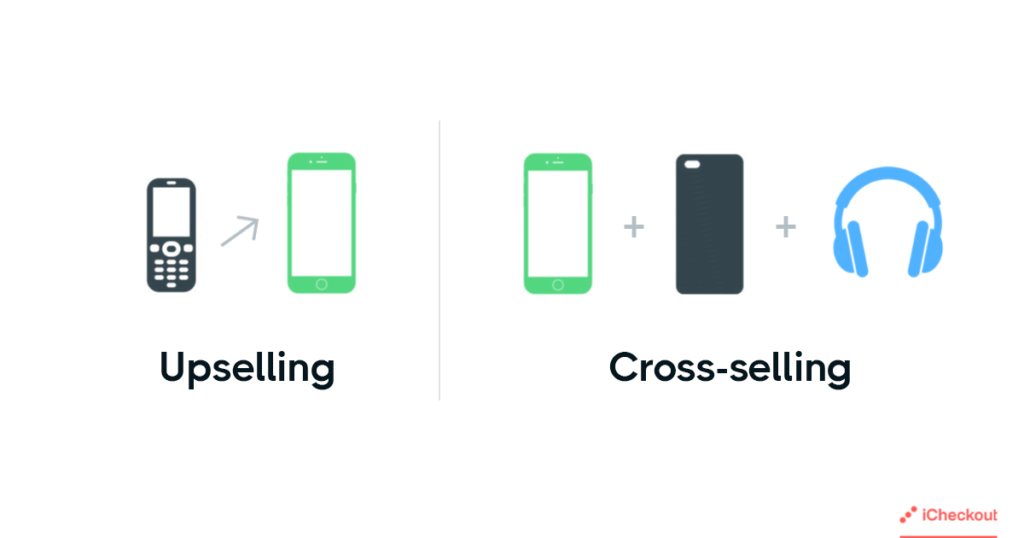
The Upsells are part of a marketing strategy where the merchant encourages customers to purchase an upgraded or premium version of a product or to buy another similar to the first one.
Here’s a real example of it:
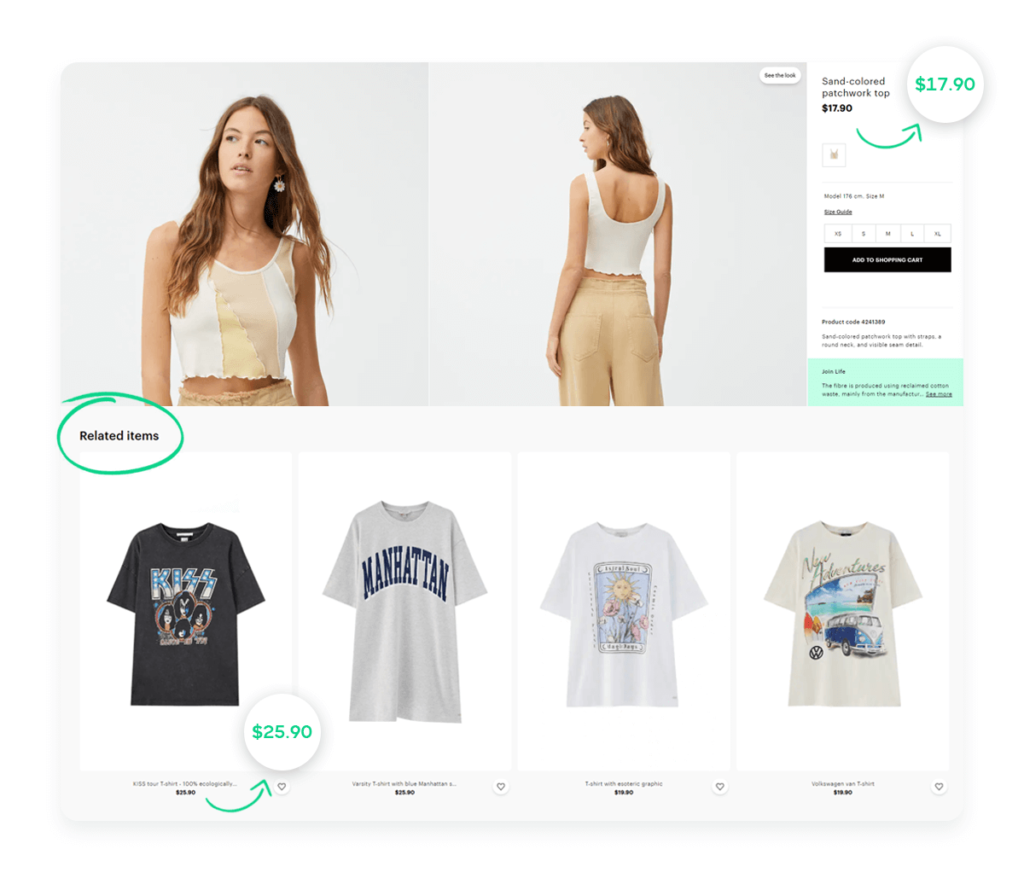
On the other side, Cross-sells are there to persuade the customer to purchase another product, but this product is an addition to the primary product.
For example:
According to the research, upsells are 20 times more effective than cross-sells, so that’s the reason why merchants prefer them more.
You can leverage upsells and cross-sells independently, which many merchants usually do, but you’ll generate the greatest results if you use them together in conjunction.
Don’t worry, we’ll show you how to do it in a minute.
What are the benefits of cross-selling and upselling?
Next to increasing revenue, there are many benefits that your business may get by implementing cross-selling and upselling into its marketing strategy.
Let’s take a look at some benefits that upselling and cross-selling provide.
1. Strengthen customer relationships using upselling and cross-selling
Upselling and cross-selling aren’t just a matter of offering your customers the best products or promoting any product from your catalog.
Effective upselling and cross-selling requires a deep understanding of your customer’s needs, who they are, what they need, and their goals and problems.
This information enables you to create more personalized offers for your customer’s specific needs in the future and have better sales success.
Investing some time in getting to know your customers will not only help you increase your revenue with upsells but will also help you build loyalty and connect with your customer on a deeper level.
To make this learning process easier, make sure to invest in a CRM system that will enable you to store your customers’ information, build their profiles, and create offers based on their purchase history.
2. Upselling and cross-selling increase a customer’s lifetime value (LTV)
When it’s up to loyalty, 43% of customers are willing to spend more money on brands or businesses they are most loyal to.
It means that upselling and cross-selling strengthen relationships and can increase your customer’s average order value (AOV) and turn one-time customers into repeat ones while increasing their LTV.
Additionally, you can segment customers based on their needs or whether they’ve made upsell or cross-sell purchases in the past, and you can retarget them with the new upsell and cross-sell offers.
3. Upselling and cross-selling can help you scale your business
You don’t have to spend 5x more money to attract new customers when you can send offers to your existing customers, which also requires less effort.
You can drastically increase your profits and grow your business faster by constantly creating new revenue streams, building customers’ equity, and decreasing advertising costs.
10 Powerful upsell and cross-sell strategies
Upsell Strategy #1 – Offer the same product
It may sound silly for you to offer the same product to the customer.
Why would anyone want to buy the same product as they just purchased, there is no logic in it, right?
Well, if you’re thinking that way, I must tell you that you’re wrong.
Actually, the practice says differently – many customers do it.
Whether they want to give the other product to someone else or to save for themselves, they are usually willing to buy it.
The best time to offer the additional same product is on the post-purchase page or on the order confirmation page.

To make the same product upsells more effective and better converting, it’s great to offer an extra discount on that second product.
For example, 10-20% discount on the second product or free shipping.
You can test it to see what works best in your case. You can also include a specific message for the other product, such as “Get another one and save 20%”.
Upsell Strategy #2 – Offer a discount
One of the most effective tactics for getting your customers interested in upsells you offer is by including a discount.
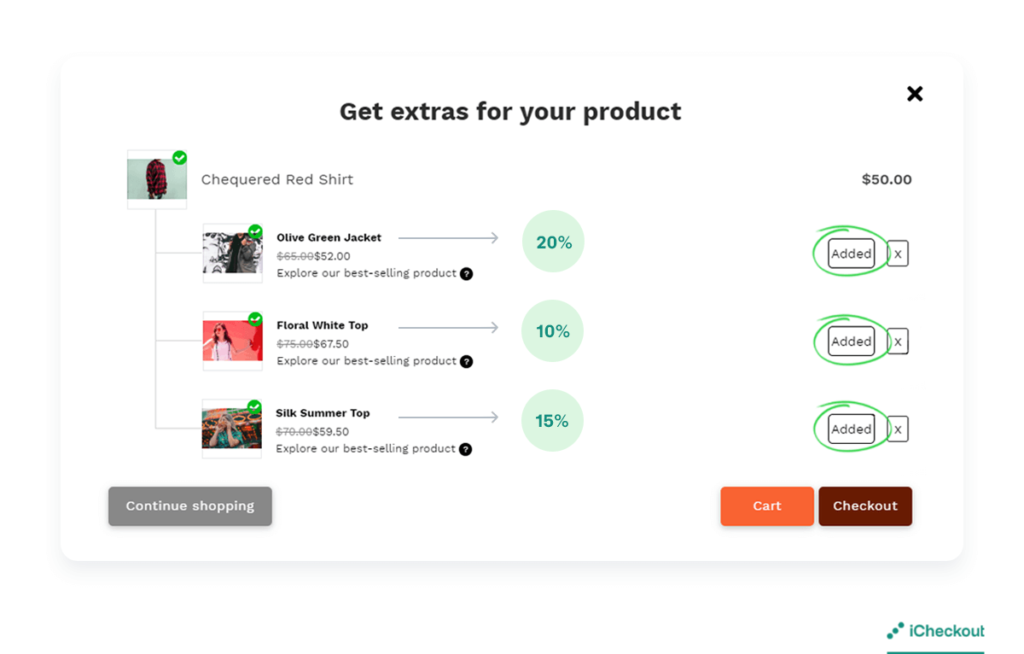
Even if you offer a small discount for your upsell products, the customer might feel it is something special for them, and they will be more likely to accept the offer.
Note: It’s a great practice to include a sense of missing the deal in your upsell offers copy because it can drastically influence the customers’ buying decisions.
Upsell Strategy #3 – Offer a product’s warranty
Normally, people are afraid of losing something and being fooled, so when they first purchase from the store, they may get a bit anxious about whether they’ll get the product they offered.
Offering a customer warranty reduces the risk of them being frustrated about the product’s quality and whether it will damage quickly.
That’s why they are more likely to buy a product’s warranty to be safe.
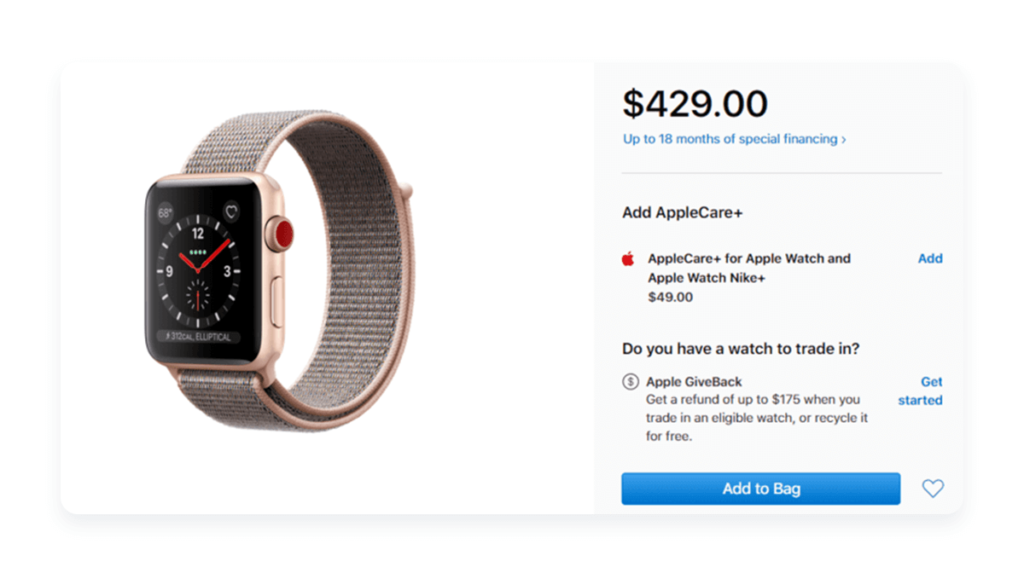
This upsell strategy is one of the most effective strategies that helped many businesses generate more sales and profits.
What’s great about these warranty offers is that merchants usually use them to cover the product’s original price and to make some extra profit with it even in case every product gets damaged, which never happens.
Upsell Strategy #4 – Special offer with Increased urgency
Another element that brings great results, besides the discount, is an offer with urgency included.
Make sure to position your specific upsell offer as something unique, limited, and not for all customers.
Just making this kind of offer will help you attract more customers, especially if you include urgency in it.
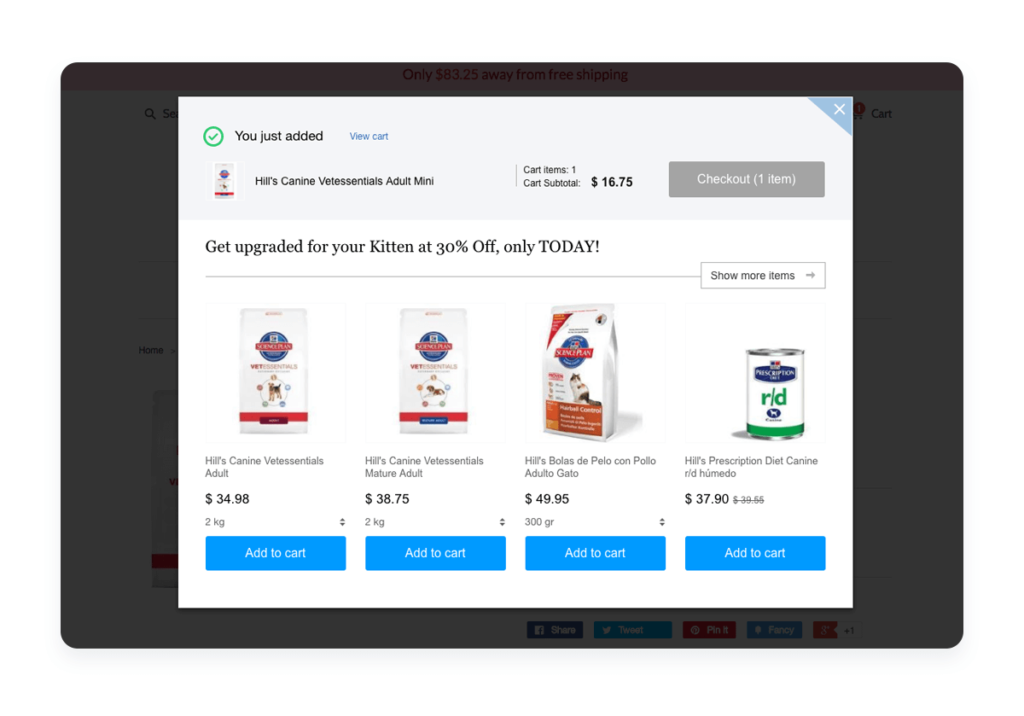
Using attractive and high-converting words such as “Limited offer,” “Only today, “or “Only for first X customers” are great examples that increase urgency.
As a part of this strategy to increase urgency, you can also integrate the countdown timer on the offer page.
Cross-sell Strategy #1 – Recommend related items
This is probably one of the most commonly used cross-selling strategies in eCommerce.
You’ve probably all seen tons of stores recommending similar or related products when you’re browsing.
At first, this might look like a basic cross-sells strategy, but it is effective in practice, especially for stores that sell a range of complementary products.
This strategy is great to implement because:
- It helps customers find a better-suited product for their needs and prevents cart abandonments.
- It’s pretty simple to implement and put into action on almost any of the eCommerce platforms.
Cross-sell Strategy #2 – Recommend recently viewed items
This works in almost the same way as the related product strategy.
Except for this time, what you’re recommending to the potential customers is not just any related product but the one that the user has recently viewed.
Many brands use this strategy well, using a simple modal under the product description:
This strategy may be particularly effective on your store in case your website tends to get a high percentage of returning visitors.
Maybe you have a well-constructed loyalty program or highly engaged people on your email list, or maybe you just have a ‘sticky’ store that people love to come back to.
Whatever the reason is, if you have a high percentage of returning visitors, then a ‘recently viewed’ cross-selling strategy may be extremely useful for your business.
Cross-sell Strategy #3 – Offer discounts on product bundles
Another effective cross-selling strategy is to combine specific products into bundles.
You’d usually then offer a discount when all the products are bought together.
Let’s say a customer wants to buy specific sportswear and checks out a retailer’s site while browsing for a hoodie.
They’d see something like this:
This is ideal for any customer who intends to buy the included sportswear in the future anyway, as they’ll be able to make a saving in the long term.
Be careful, though:
Maintaining correct inventory levels when bundling products together can be tricky.
Note: Ensure overall stock levels stay aligned, regardless of whether an item is purchased via a bundle or as an individual product.
Cross-sell Strategy #4 – Push products directly after purchase
The cart isn’t your last chance at cross-selling, though.
You can very easily push your other products post-purchase. Like on the order confirmation page:
This can be a crazy effective strategy for cross-selling further products.
Especially if you offer a time-sensitive discount available only right there and then – close the page, and they lose the discount.
You can even set this up so the customer won’t have to enter payment details again. Just click ‘Add to Order and the product gets added!
5. Cross-sell Strategy #5 – Offer thresholds
This is one of the most popular cross-sell techniques and can be seen at every level of product sales.
It’s technically not cross-selling, as you’re not actively recommending a supplementary product to your prospects.
You are, however, incentivizing them to spend more by notifying them of an order discount threshold such as the one below.

Whilst not technically a traditional method of cross-selling, it’s incredibly effective in increasing AOV and overall revenue.
By offering this deal, you’re creating a win/win scenario for everyone involved.
You, as the company, are increasing your AOV whilst the customer, despite spending a little more money, is getting an incredible bang for their buck.
Coupling this with the traditional cross-sell technique of suggesting supplementary products can profoundly affect your overall AOV and revenue.
BONUS: Send upselling and cross-selling follow-up emails
You don’t even have to stop with upsells and cross-sells on the confirmation page.
The customer who just purchased some of your products is perfectly warmed to purchase another product.
They just need a little encouragement from your side.
This is an ideal place for starting automated email campaigns.
Using Sendgrid or Klaviyo you can create pre-built email campaigns and customize them in your way:
Using these tools, you can send follow-up emails and post-purchase offers to your customers in order to sell more and increase their lifetime value.
Note: Keep your cross-sell email offers relevant to the previously purchased products, and create urgency with time-limited discounts for better performance.
Make upsell and cross-sell tools part of your strategy
The strategies we discussed can be extremely effective, and they can bring great results if you use them adequately.
Still, it might seem a little complicated for you to set them up in case you don’t have coding knowledge.
Luckily, a wide range of upselling and cross-selling tools are available on the market to help you and make it simple to implement these strategies.
Maybe you don’t have coding knowledge, but we did some homework for you.
For this reason, we created iCheckout.
We believe that customers shouldn’t waste time filling in details that can be automatically filled in.
That’s why we implemented iCheckout’s smart fields – fields that are automatically ticked and pre-selected.
85% of online purchases are made using mobiles.
That’s why all customer interactions in iCheckout are masterfully crafted with a mobile-first approach – to provide the smoothest checkout experience of all time.
With thousands of Ecommerce elites, we’ve built the ultimate checkout process that redefines the purchasing experience while keeping it secure, easy, and seamless.
iCheckout helps you leverage the power of social proof and reviews at every step of the checkout process and increase your revenue by 21% through automatic discounts, and the smartest upsells you have ever seen.
Using iCheckout on your store, customers shouldn’t spend more than 25 seconds on the checkout page.
You are two clicks away from setting up the CRO tool that will skyrocket your business – literally.
Things like these shouldn’t be hardcoded, and we are here to help you save time and focus on one thing that truly matters – scaling.
Start using iCheckout today and increase your conversion rate drastically by creating the best checkout pages with a bunch of features in only a few clicks!
If you’re ready to minimize checkout abandonment rate and skyrocket your eCommerce performances and increase your revenue, you know what to do.
iCheckout is about to release the beta soon, so you can test the tool and see how it fits your eCommerce needs.
Join our waitlist, and be among the first beta users when iCheckout gets live!




